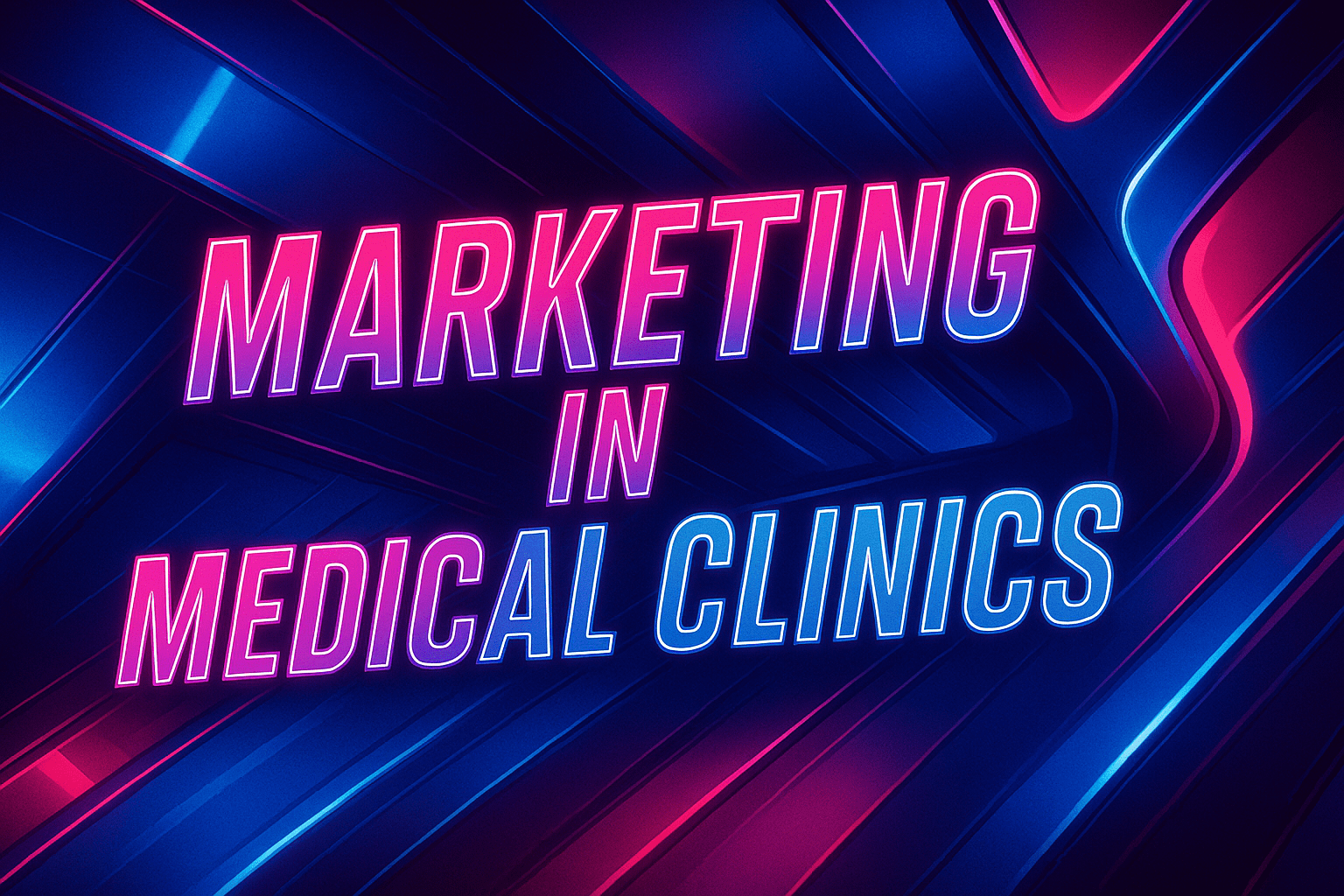Marketing for Beauty & Cosmetics: Complete Strategy Guide for 2026
by Design Delulu Editorial · October 7, 2025
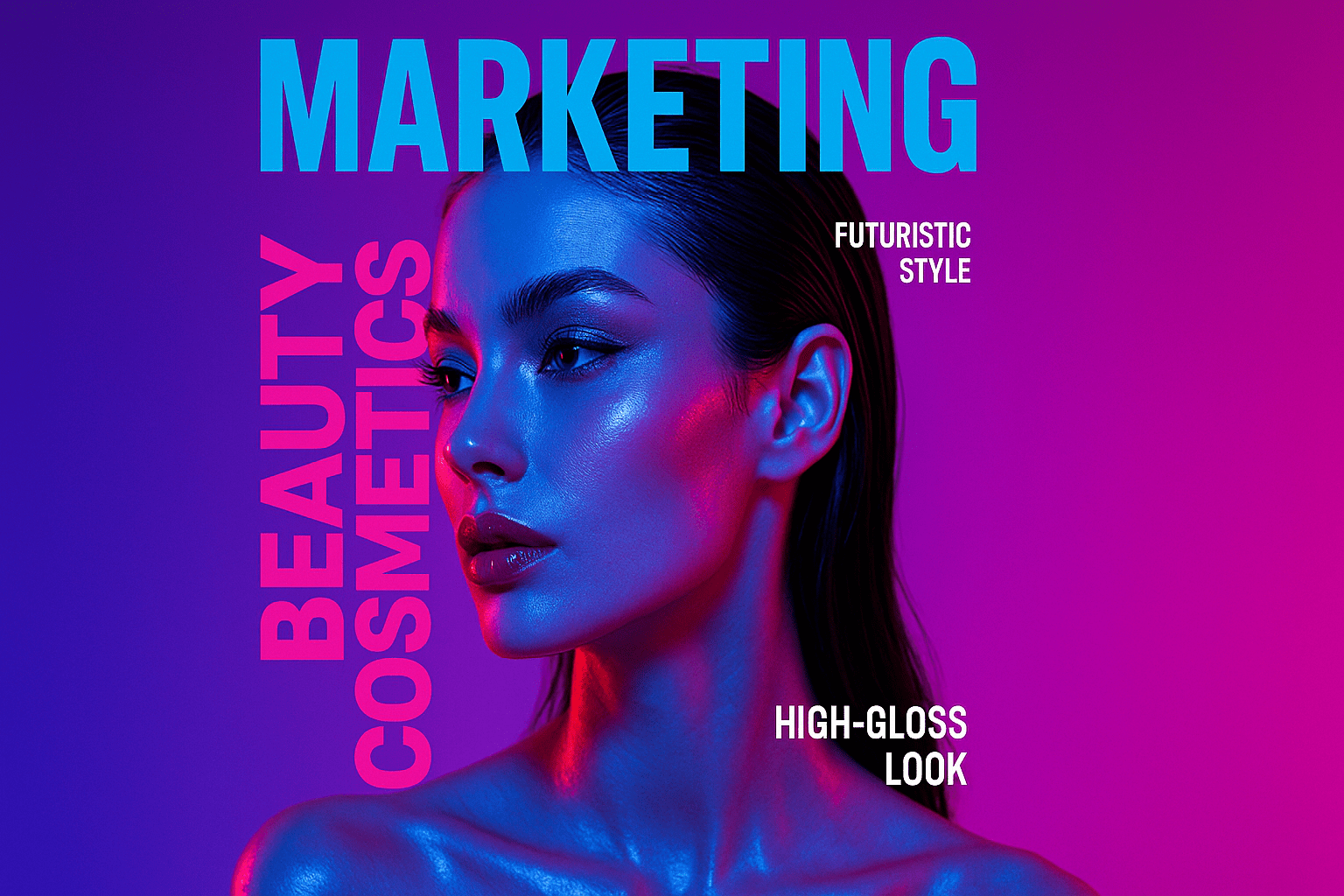
Marketing for beauty & cosmetics demands precision, creativity, and measurable impact. The beauty industry moves fast—trends shift overnight, consumer preferences evolve constantly, and competition intensifies across every channel. Brands that win aren't just creating content; they're building strategic marketing systems that connect authentic storytelling with rigorous performance measurement. Whether you're launching a new skincare line, scaling a cosmetics brand, or repositioning an established beauty company, your marketing must balance creative excellence with data-driven decision-making.
The stakes are higher than ever. Beauty consumers research extensively before purchasing, expect personalized experiences across touchpoints, and demand transparency about ingredients, values, and results. Generic marketing approaches fail because they don't account for the unique buyer journey in beauty & cosmetics—where education, trust-building, and social proof matter as much as product features. This guide reveals how leading beauty brands structure their marketing for maximum impact, from audience research and content strategy to campaign execution and performance optimization. You'll discover frameworks that accelerate growth while maintaining brand integrity and customer trust.
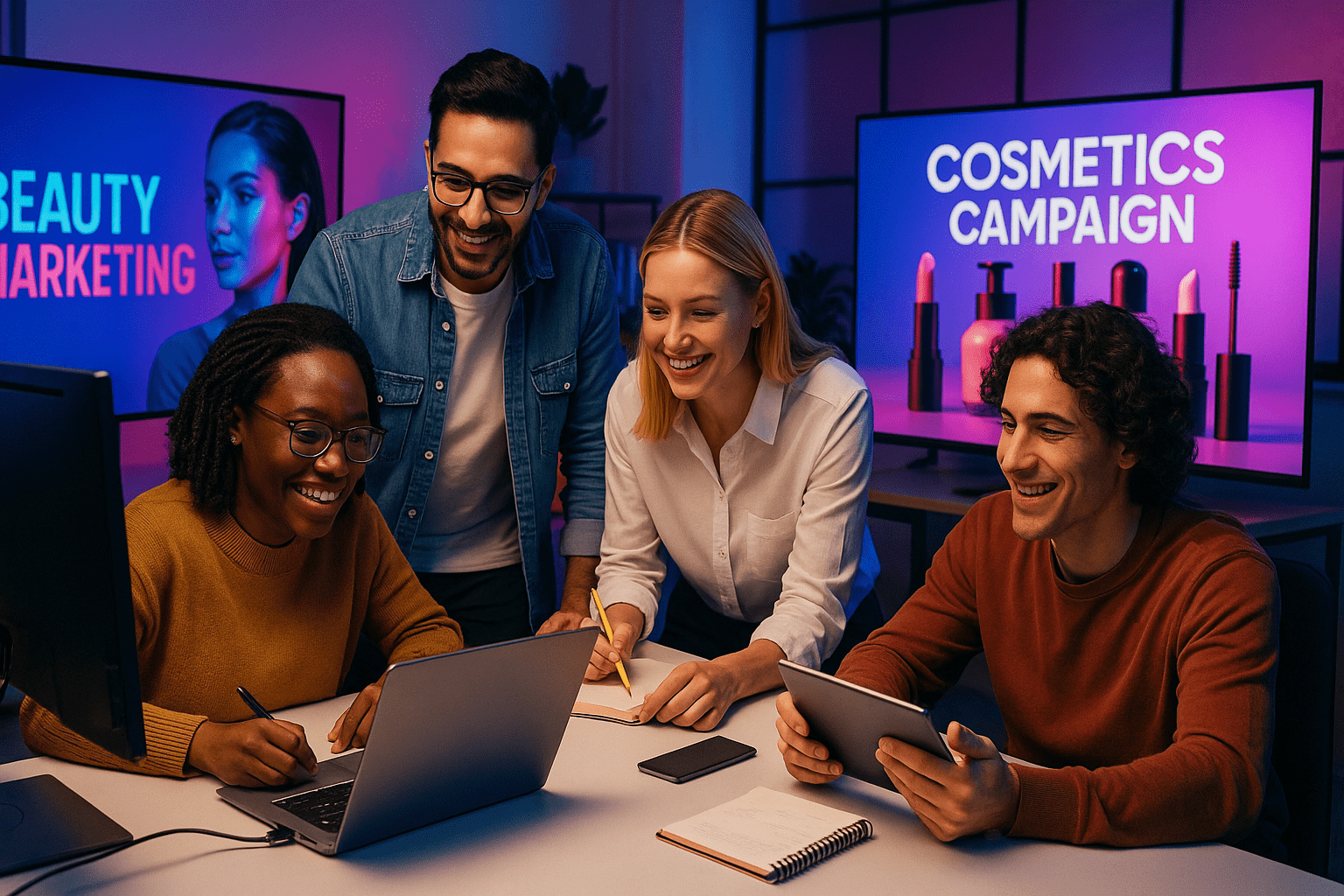
Why Marketing for Beauty & Cosmetics Requires a Specialized Approach
Beauty & cosmetics marketing differs fundamentally from other industries because purchase decisions blend rational evaluation with emotional connection. Consumers don't just buy products—they invest in transformation, self-expression, and confidence. Your marketing must address functional benefits (does this moisturizer hydrate?) while tapping into aspirational desires (will this make me feel radiant?). This dual requirement demands content strategies that educate and inspire simultaneously.
The beauty customer journey is uniquely complex. Shoppers research ingredients on Google, watch tutorial videos on YouTube, seek recommendations on Reddit, compare products on Instagram, read reviews on brand websites, and often visit physical stores before purchasing. Each touchpoint requires tailored messaging that builds trust and moves prospects toward conversion. Marketing that ignores this multi-channel reality wastes budget on disconnected tactics that don't compound.
Additionally, beauty & cosmetics face intense scrutiny around claims, ingredients, and authenticity. Consumers demand proof—clinical studies, before-and-after results, ingredient transparency, and genuine user-generated content. Your marketing must balance persuasive storytelling with credible evidence. Brands that master this balance create loyal communities; those that oversell or underwhelm lose credibility fast.
Core Components of Effective Beauty & Cosmetics Marketing
Successful marketing for beauty & cosmetics rests on four foundational pillars: audience intelligence, content architecture, campaign execution, and performance measurement. Each pillar requires specific expertise and systematic implementation.
Audience Intelligence & Segmentation
Deep audience research separates winning beauty marketing from generic content. Start by mapping your ideal customer profiles across demographics, psychographics, and behavioral patterns. What skin concerns keep them searching at 11 PM? Which ingredients do they actively avoid? What content formats drive their purchase decisions? Use search data, social listening, customer interviews, and competitive analysis to build detailed audience segments. These insights inform everything from keyword targeting to creative messaging to channel prioritization.
Beauty audiences aren't monolithic. A Gen Z consumer discovering skincare differs dramatically from a millennial parent seeking clean beauty products or a luxury consumer exploring anti-aging treatments. Your marketing must speak to each segment's unique needs, values, and decision criteria. Create content calendars that address multiple audience segments strategically rather than trying to appeal to everyone simultaneously.
Strategic Content & Editorial Planning
Content is the engine of beauty & cosmetics marketing. An editorial calendar built on audience research ensures you're creating the right content for each stage of the buyer journey. Awareness-stage content addresses broad concerns (understanding skin types, ingredient education, beauty trends). Consideration-stage content provides detailed comparisons, how-to guides, and expert recommendations. Decision-stage content leverages social proof, product details, and clear calls-to-action.
Diversify content formats to match consumption preferences: blog posts for SEO and detailed education, email sequences for nurturing and conversion, social media for engagement and community-building, video content for tutorials and product demonstrations, and user-generated content for authenticity and social proof. Each format serves specific goals within your overall marketing ecosystem. The key is creating content that genuinely helps your audience while strategically guiding them toward purchase decisions.
Multi-Channel Campaign Execution
Beauty consumers interact with brands across numerous touchpoints before converting. Your marketing must orchestrate coordinated campaigns that deliver consistent messaging while respecting each channel's unique dynamics. A product launch campaign might include: SEO-optimized landing pages capturing search demand, email sequences nurturing your existing audience, social media content building anticipation and engagement, influencer partnerships extending reach and credibility, and paid advertising accelerating visibility for high-intent audiences.
The magic happens when these channels reinforce rather than compete with each other. Someone discovers your brand through an Instagram post, searches your brand name on Google, lands on an optimized blog post, joins your email list for a discount code, and ultimately converts after receiving targeted email content. This integrated approach requires careful planning, consistent creative standards, and centralized measurement.
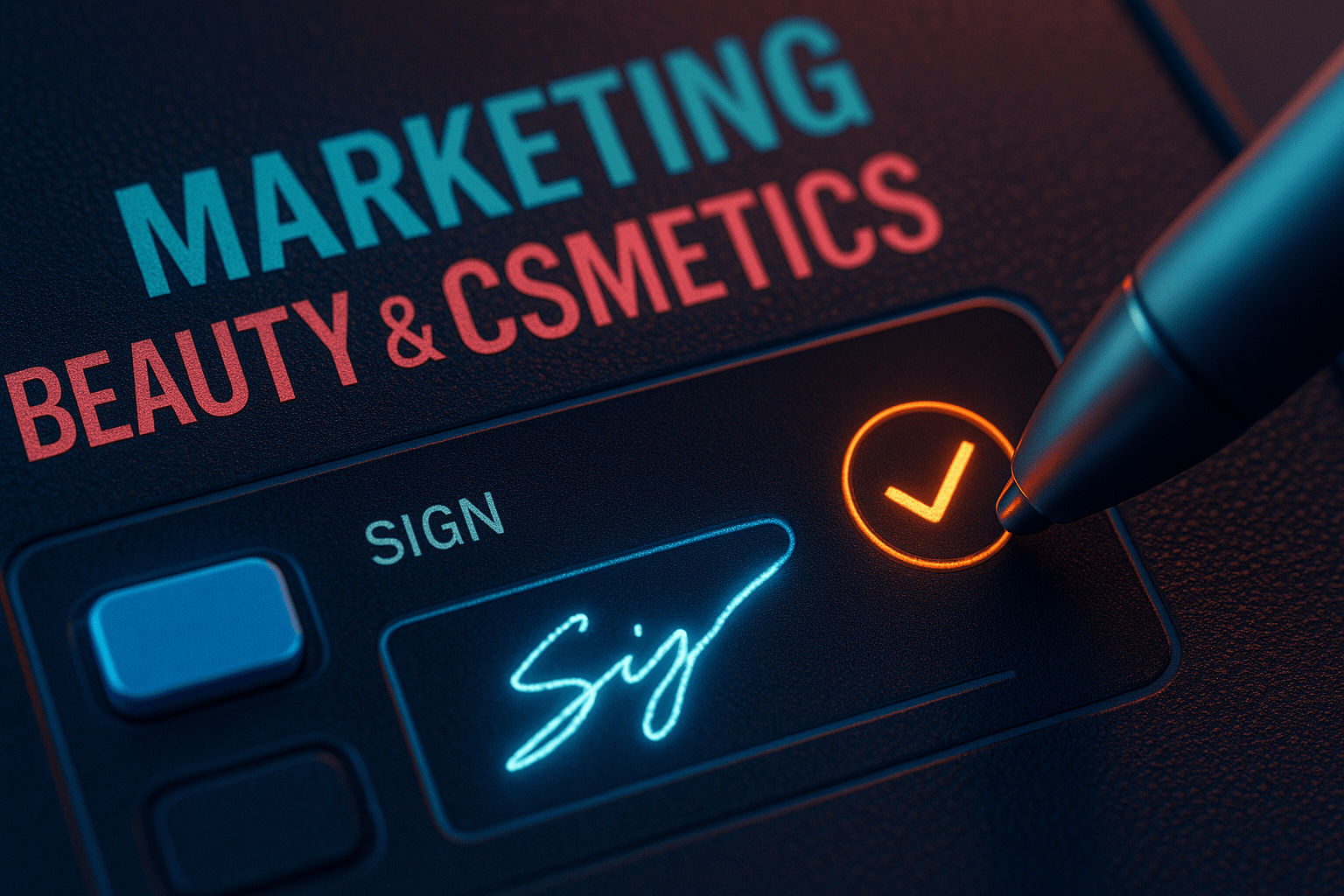
Implementation Framework: From Strategy to Results
Effective marketing for beauty & cosmetics follows a structured process that moves from strategic foundation to tactical execution to continuous optimization. Here's how leading brands implement marketing that drives measurable business impact.
Phase 1: Discovery & Strategic Foundation
Begin with clarity on business objectives, target audiences, competitive positioning, and success metrics. What specific outcomes does marketing need to deliver? Who are you trying to reach, and what motivates their purchase decisions? How do competitors position themselves, and where are the gaps you can exploit? Which KPIs truly indicate marketing success—qualified leads, revenue attribution, customer acquisition cost, lifetime value?
This discovery phase establishes strategic guardrails that prevent wasted effort. Document your positioning, messaging hierarchy, content themes, channel priorities, and measurement framework. Get alignment from stakeholders before moving to execution. Skipping this foundation leads to scattered tactics that don't compound into meaningful results.
Phase 2: Blueprint & Architecture Design
Transform strategy into actionable blueprints. Design your content architecture—the topics, formats, and distribution channels that will deliver your message. Create detailed editorial calendars mapping content to audience segments, buyer journey stages, and seasonal opportunities. Plan campaign structures that coordinate activities across channels for maximum impact.
Develop content briefs that guide creation while maintaining quality and consistency. Establish templates and systems that enable you to scale content production without sacrificing standards. Build measurement plans that connect marketing activities to business outcomes through clear attribution models. This blueprint becomes your execution roadmap.
Phase 3: Build, Launch & Activate
Execute your blueprint with discipline and attention to quality. Create content that meets strategic objectives while delivering genuine value to your audience. Implement tracking and analytics infrastructure before launching campaigns so you're capturing data from day one. Test messaging, creative, and calls-to-action to identify what resonates before scaling investment.
Launch campaigns with clear success criteria and review cadences. Monitor performance in real-time, but resist the urge to over-react to early signals. Give campaigns sufficient time to generate statistically significant results before making major adjustments. Focus on execution excellence—every piece of content, every email, every social post should meet your quality standards and serve strategic goals.
Phase 4: Measure, Learn & Optimize
Continuous improvement separates good marketing from great marketing. Analyze performance data to understand what's driving results and what's underperforming. Look beyond surface metrics (likes, clicks) to business outcomes (qualified leads, pipeline, revenue). Identify patterns—which content topics generate engagement and conversion? Which channels deliver the best ROI? Which audience segments respond most strongly?
Use these insights to double down on what works and eliminate what doesn't. Update your content calendar based on performance data. Refine messaging based on what resonates. Reallocate budget toward high-performing channels. Test new approaches informed by learnings. Marketing optimization isn't about constant change—it's about making increasingly informed decisions that compound returns over time.

Best Practices for Beauty & Cosmetics Marketing Success
Certain principles consistently separate effective beauty marketing from wasted effort. Prioritize highest-impact initiatives first—the 20% of activities that will drive 80% of results. In most cases, this means focusing on bottom-of-funnel content and campaigns that convert warm audiences before investing heavily in top-of-funnel awareness.
Pair every creative asset with clear measurement. Beautiful content without performance tracking is just expense. Establish KPIs for each campaign, content piece, and channel. Use attribution modeling to understand which marketing activities genuinely contribute to revenue versus those that simply correlate with conversions.
Build systems and templates that enable you to scale efficiently. Create content frameworks, messaging templates, brief structures, and approval workflows that maintain quality while increasing output. The brands that win in beauty marketing aren't just more creative—they're more systematic about translating strategy into execution.
Close the feedback loop with regular performance reviews. Weekly check-ins on campaign performance, monthly deep-dives into channel effectiveness, and quarterly strategic reviews ensure you're learning continuously and adapting based on evidence rather than assumptions.
Industry-Specific Strategies for Beauty & Cosmetics Brands
Beauty marketing requires tactics tailored to industry-specific dynamics. Map search intent to buyer journey stages with precision. Someone searching "best retinol serum" is in consideration mode and needs comparison content. Someone searching your brand name plus "review" is in decision mode and needs social proof and conversion-optimized landing pages. Align content to intent for maximum effectiveness.
Deploy social proof and outcome-focused messaging early in the customer journey. Beauty consumers need confidence that products deliver results. Feature before-and-after imagery, customer testimonials, clinical study results, and expert endorsements throughout your marketing. Make credibility-building content easily discoverable across all touchpoints.
Establish a single source of truth for performance measurement. Beauty marketing spans numerous channels and touchpoints, making attribution complex. Implement unified dashboards that track leads, pipeline, and revenue across all marketing activities. Use this data to make informed decisions about budget allocation and strategic priorities.
Adopt a "ship small, test fast, keep compounding wins" mentality. Beauty trends move quickly, and consumer preferences evolve constantly. Launch campaigns in phases, test multiple approaches, gather data quickly, and scale what proves effective. This iterative approach reduces risk while accelerating learning and optimization.
Frequently Asked Questions
Let’s level up your Beauty & Cosmetics business
Need services that actually move the needle for Beauty & Cosmetics? See our approach, pricing, and timelines—then book a quick call.
Additional Resources
- Schedule Your Marketing Strategy Session
Book a complimentary 30-minute consultation to discuss your beauty brand's marketing challenges, growth goals, and how our proven frameworks can accelerate your results.
- View Our Beauty & Cosmetics Portfolio
Explore successful marketing campaigns, content strategies, and performance results we've delivered for beauty and cosmetics brands across skincare, makeup, haircare, and wellness categories.
- Free Beauty Marketing Tools & Resources
Access our collection of free marketing tools, templates, and resources designed specifically for beauty & cosmetics brands—including content calendars, SEO checklists, and campaign planning frameworks.
Related Reading
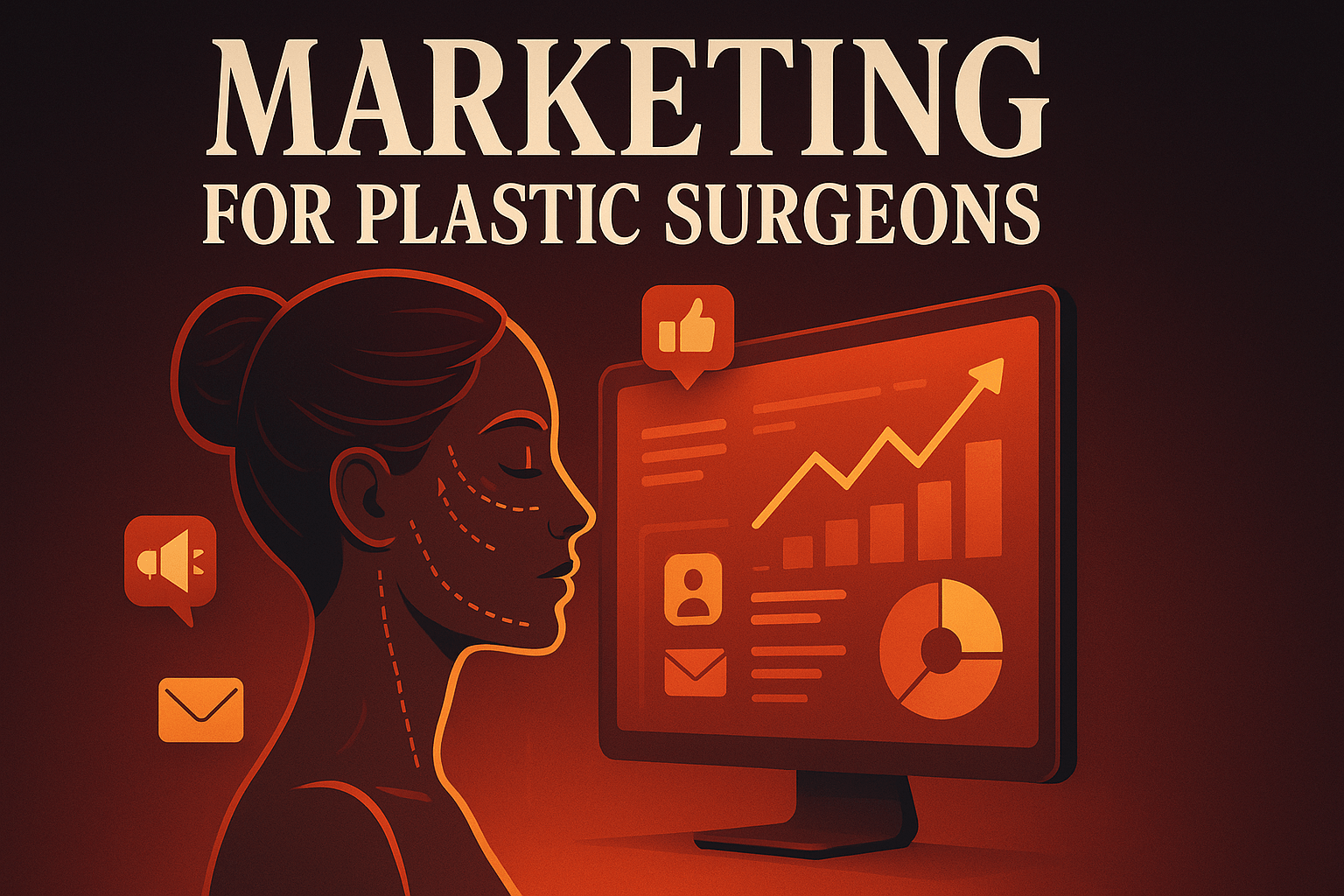
Discover proven marketing strategies for plastic surgeons. Learn SEO, content marketing, social media tactics, and patient acquisition systems that drive real results.
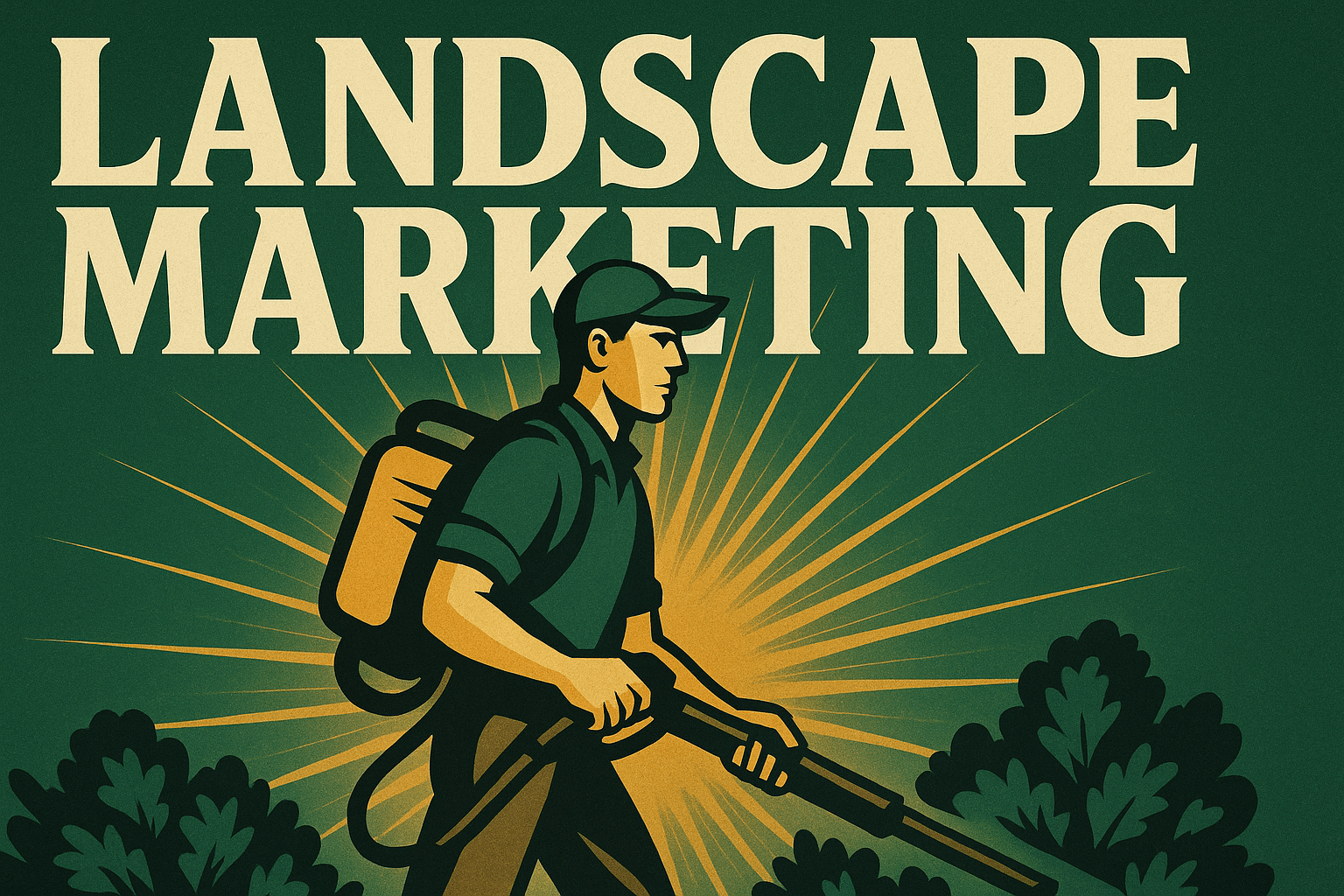
Discover proven marketing strategies for landscapers that drive real results. From SEO to social proof, learn how to attract high-value clients and scale your landscaping business profitably.
